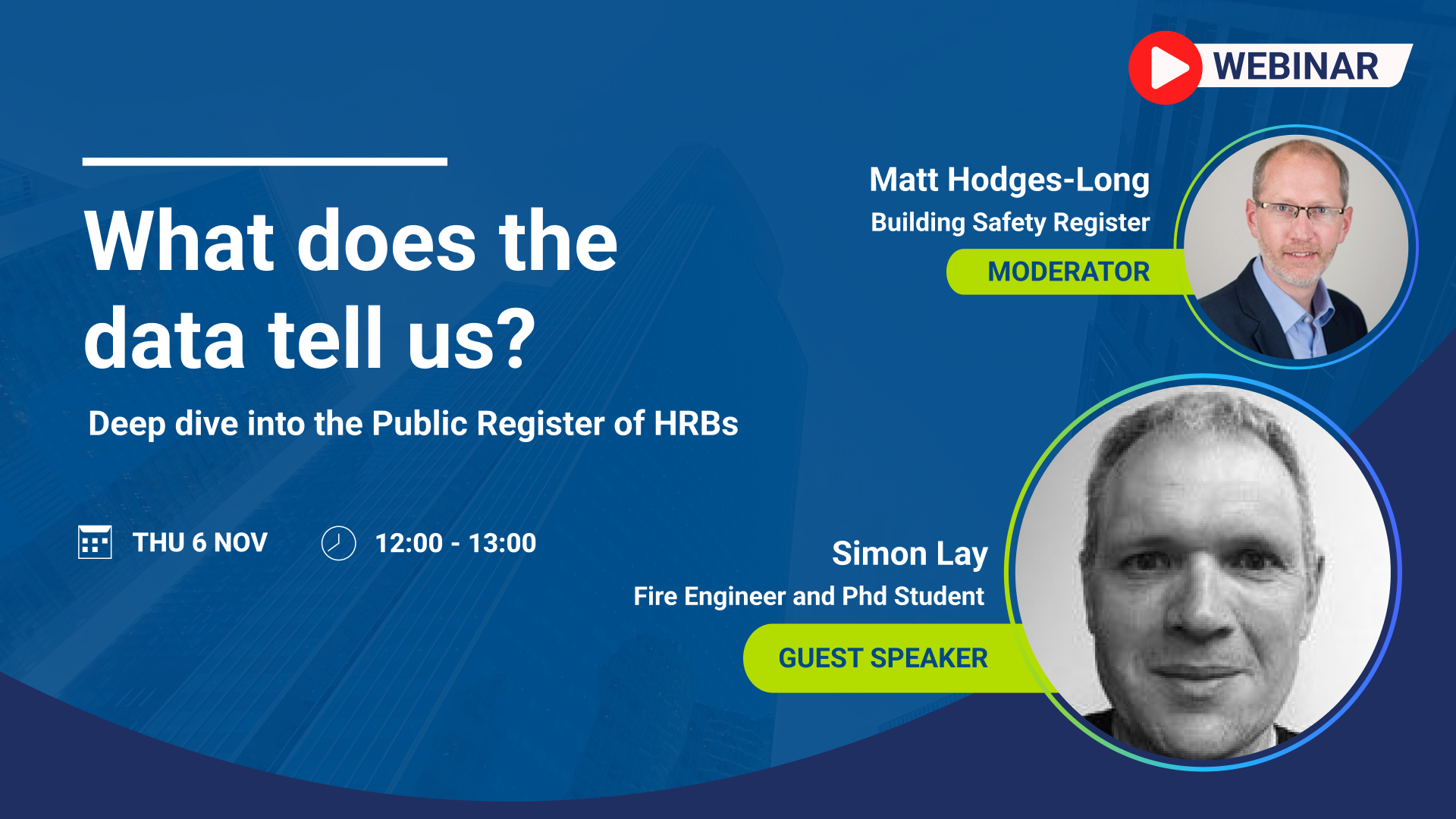BSR Lunch & Learn Webinar – What Does the Data Tell Us?
The latest Lunch & Learn session, hosted by Matt Hodges-Long, examined the data now available through the Building Safety Regulator’s (BSR) Public Register of Higher-Risk Buildings (HRBs). While our expert contributor, Simon Lay, was unable to join at the last minute, Matt led an in-depth exploration of the data, the Register’s limitations, and what it…

Overview
This session looked beyond the headlines – focusing on whether the data supports the theory that we are seeing a meaningful “step change” in building safety since the Grenfell tragedy.
This Lunch & Learn webinar explored whether the HRB Public Register data provides evidence of progress in building safety since the implementation of the Building Safety Act. Matt analysed the register’s current dataset, its limitations, and the challenges created by the BSR’s manual processes – alongside participant discussion on the real-world impact for Principal Accountable Persons (PAPs), residents and the wider sector.
Topics covered included the quality of the HRB dataset, repeated Requests for Information (RFIs), the lack of digital strategy within the regime, and the opportunity for smarter regulation powered by automation and supervisory technology (SupTech).
Here are the key takeaways from the session:
Details
1. Repeated RFIs are creating unnecessary delays and cost
Matt highlighted widespread frustration with the BSR’s repeated Requests for Information — including duplicate questions and requests for documents already submitted. This “RFI loop” is increasing costs for building owners and PAPs, slowing progress and blocking assessments for other buildings in the system.
RFIs are chargeable, meaning inefficiency directly increases cost for leaseholders and providers.
2. The HRB Public Register has major data quality and usability issues
The Public Register was launched in February 2024 to increase transparency, but analysis shows:
- Only full postcodes can be used to search
- You cannot search by building name, PAP, development or BAC status
- Data inconsistencies and duplicates are widespread
- Some fields contain incorrect information (e.g., HRB numbers listed where postcodes should be)
This significantly limits the register’s value for residents, industry, press and policymakers.
3. The scale of HRB data is significant — but not yet usable
The current dataset includes 14,845 block records, which reduces to 13,027 unique HRBs when duplicates are removed. Analysis suggests:
- ~1 million residential units sit within HRBs
- 67% of English councils have no HRBs — but those that do often have many
- ~5,000 PAPs are listed, although this likely includes duplicates due to inconsistent naming
The data could unlock powerful insights – but only once it is reliable.
4. Manual processes are blocking progress and the “Golden Thread” vision
The regulator is still relying on manual document handling (SharePoint folders, emailed documents, password-protected links), which:
- Creates “folder-hell” behind the scenes
- Makes it difficult to maintain evidential integrity
- Prevents automation, analytics or machine learning
- Conflicts with the principle of a single source of truth
Matt argued that a digital regulatory model using SupTech could drastically improve speed, cost, consistency and safety outcomes.
5. The system prioritises Gateways 1 & 2 – while Part 4 risks are neglected
The group discussed the concern that new-build regulation (Gateways) has overshadowed the occupation-phase safety regime, despite Part 4 representing the highest risk to residents.
The result: buildings already occupied and at risk are waiting longer for assessment and clarity.
Summary
This webinar examined whether the HRB Public Register data shows the “step change” in building safety that many hoped would follow Grenfell. While the availability of a public register marks progress, significant issues with data quality, usability and regulatory processes mean the sector is still far from realising the promise of a data-driven safety regime.
The key message: the data has potential – but the current system prevents it from being used effectively. To deliver meaningful safety improvements at scale, the regulator will need to embrace automation, digital tools and a more outcome-focused approach.
Matt closed the session by encouraging continued discussion and sharing of case studies, and invited attendees to submit topics for future Lunch & Learns.
The next session will take place on Thursday 4th December at 12:00 PM.

